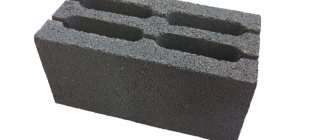How much does a bucket of cucumbers weigh (without a slide and with a slide)?
There are some nuances in this issue that need to be taken into account, for example, the shape and size of the fruit. The average density of a cucumber was also calculated, so everything must be taken into account and based on the average value. We take those same averages and get the following results:
– a bucket with a volume of ten liters equals – 7-7.5 kilograms (if without a slide)
– with a slide, the same volume weighs approximately 7.5-8.5 kg.
Therefore, if you take a five-liter bucket, then we divide the indicators in half.
How much does a bucket of potatoes weigh?
The most popular crop is, of course, potatoes, which are also called second bread. Very often, when stocking up on crops for the winter, when purchasing, we are faced with the following question: “How many kilograms are in this bucket?”
So here, first of all, everything will depend on the volume of the bucket, the size of the fruit, and so on. If we take a 10-liter container and fill it to the top with vegetables, then we will get 6.5-7.5 kilograms, if we take a 12-liter container - about 10 kilograms.
Here you need to know that there will be more small potatoes in the same bucket than large ones, since if the potatoes are large, there will be more empty space in the container.
How much does a bucket weigh
When going once again to buy products for jam, compotes, pickles, or simply stocking up, most of the population takes a bucket with them.
Therefore, it would be useful to find out how many kilograms of food fit in a bucket. Potatoes have long become a popular “independent” product in our menu, as well as an indispensable component of many dishes. Therefore, this gardening food product is purchased not in kilograms, but in buckets or even bags. How much does a bucket of potatoes weigh? This question is often asked by buyers at the market, stocking up on potatoes for future use for several months at once. Today we will learn about the weight of one “standard” bucket of potatoes, as well as other products and materials.
How many kg of seeds are in a bucket?
Pivot table
| The name of the product for which you need to find out reference data on the topic: how much the bucket weighs in kilograms. | Bucket capacity in liters. | How much does 1 liter, one liter, one liter jar weigh in kilograms (number of kg). |
| Seeds . | 10 l. | 0.3 |
| Carrots, carrots. | 10 l. | 0.56 — 0.6 |
| Wet sand. | 10 l. | 1.9 — 2.1 |
| Raspberries . | 10 l. | 0.56 |
How much does a bucket of potatoes weigh?
In addition, the material from which the bucket is made is taken into account. So, in an enamel bucket, the weight of the empty container is added to the weight of the potatoes - about 2 kg. And the weight of potatoes poured into a galvanized bucket with a capacity of 10 liters will increase by about 1 kg.
About 10.3 kg of medium-sized tubers can be poured into a 12-liter bucket, excluding the weight of the container.
How much does a bucket of potatoes weigh? Another deciding factor is the size of the tubers in the bucket. More small potatoes will fit into a bucket than large ones, and the filling of the space will be more dense. But large, elongated potatoes leave a lot of free space in the bucket.
For comparison: if you pour small and large potatoes into two identical containers and compare the weight, then in the first case the bucket will be a little heavier.
How much does a bucket weigh?
Basic Russian premetric measure of liquid volume bucket = 1/40 barrel = 10 mugs = 30 pounds of water = 20 vodka bottles (0.6) = 16 wine bottles (0.75) = 100 glasses = 200 scales = 12 liters (15 l - according to other sources, rarely) B. iron, wooden or leather utensils, mostly cylindrical in shape, with ears or a bow for carrying. In everyday life, two buckets on the rocker should be in a “woman’s lift.” Division into smaller measures was carried out according to the binary principle: the bucket was divided into 2 half-buckets or 4 quarters of a bucket or 8 half-quarters, as well as into mugs and cups. The oldest “international” measure of volume is a handful.
Until the middle of the 17th century. the bucket contained 12 mugs; in the second half of the 17th century. the so-called government bucket contained 10 mugs, and a mug contained 10 cups, so the bucket contained 100 cups. Then, according to the decree of 1652, the glasses were made three times larger than before (“three glasses”). The sales bucket held 8 mugs. The value of the bucket was variable, but the value of the mug was constant, 3 pounds of water (1228.5 grams). The volume of the bucket was 134.297 cubic inches.
Now buckets are produced in volumes of 5, 7, 9, 10 and 12 liters.
Content:
How much does a bucket of potatoes weigh?
The weight of a bucket of potatoes, first of all, depends on the volume of the container itself. For example, 6.5 - 7.5 kg of potatoes can be poured into a 10 liter bucket. The value of this indicator is also affected by the fullness of the bucket - if the seller generously poured a heaping amount of potato tubers, then the total weight will increase.
A 10-liter bucket weighs 6.5 - 7.5 kg, and a 12-liter bucket weighs up to 10.3 kg.
The weight variation when filling ten liters is 6.5-7.5 kilograms. How many kg of potatoes are in a 12-liter bucket? You need to divide the weight of a ten-liter bucket by 10 and multiply by 12. So, for potatoes, the calculated mass in a 12-liter vessel is in the range of 7.8-9.0 kilograms.
READ ALSO: Genital herpes in men and women: treatment and symptoms
For comparison: if you pour small and large potatoes into two identical containers and compare the weight, then in the first case the bucket will be a little heavier.
The weight of a bucket of potatoes depends on the physical shape of the bucket and the volume of tubers. An approximate everyday classification of starchy fruit is given in the table.
How much does a bucket of apples weigh?
The weight of one medium-sized apple is 176 grams. The weight of a peeled apple is 138 grams.
The mass of a 10-liter bucket of apples is approximately 4.3 - 5.8 kg.
It is noteworthy that compared to potatoes, apples are a fairly light product. And, if compared with a bucket of sand, a bucket of apples is more than 2.5 times lighter.
Apples are usually divided into the following fractions by weight and size:
How much does a bucket of mushrooms weigh?
Mushrooms can differ not only in taste and general appearance, but also in density. Different types of mushrooms have different densities, which determines their weight.
A bucket of mushrooms weighs from 2.5 to 10 kg. depending on the type of mushroom.
For example, let’s take a ten-liter container as a unit of measure. A bucket of chanterelles weighs 2.5 kg, honey mushrooms - 3 - 4 kg, saffron milk caps - 4 kg, porcini mushrooms - 4 - 6 kg, butter mushrooms - 10 kg. So, of these species, chanterelles are the lightest, and boletus mushrooms are the heaviest mushrooms by weight.
How much does a bucket of cucumbers weigh?
Of course, cucumbers come in different sizes and shapes. Usually there are much more small cucumbers in a bucket than large ones. The weight of the cucumbers in the bucket will depend on the density of their packing.
A full ten-liter bucket of cucumbers weighs 6 – 7 kilograms.
In a 10-liter bucket of cucumbers there are no more than 7 kg, and if they were also laid across each other, then in general it will not reach 6 kg, it will be 5.5 kg. Accordingly, in a 5-liter bucket - from 3 to 3.5 kg. From a bucket of cucumbers (with a heap) you can screw 3 three-liter jars (with the addition of pepper, garlic and other spices), we pack them tightly into the jars, so the volume is reduced significantly. And if you also cut off the ends of the cucumbers, you will get 7 - 8 liters in volume.
- A 1 liter jar contains 10-12 cucumbers, smaller than average in size.
- A 1.5 liter jar holds 15-16 pieces
- A 2-liter jar holds 20-24 medium-sized cucumbers or 13-16 large-sized cucumbers.
- A 3-liter jar contains 30-36 medium-sized or 15-20 large-sized cucumbers
READ ALSO: Focus on cheekbones: 6 questions about removing Bisha's lumps
How much does a bucket of tomatoes weigh?
The weight of a bucket of tomatoes largely depends on the variety, that is, the size of the tomatoes, their shape and their density. After all, there are denser and heavier tomatoes, and there are soft and lighter ones. But on average, a bucket of tomatoes pulls 9 kilograms.
A 10 liter bucket of tomatoes weighs 9 - 10 kg.
If there are fewer voids between the tomatoes, then the tomato can yield all of ten kilograms, if there are more, then eight. If you look at the reference tables, they show the volumetric density of tomatoes, that is, the density taking into account the air space between them, and indicate that exactly 10 kilograms of tomatoes fit in a ten-liter bucket. In practice, they fit a little less.
How much does a bucket of strawberries weigh?
During the harvesting and conservation season, many housewives ask a similar question. Indeed, in some recipes for strawberry jam, jam or compote, the unit of measurement is kilograms. Therefore, it is worth remembering that one bucket (10 l) of strawberries can weigh 6 - 8 kg.
The weight of a 10-liter bucket of strawberries is approximately 6 - 8 kg.
How many strawberries there will be in a kilogram depends on the weight of one berry. And the weight of strawberries among different varieties can vary by 10 or even more times. One strawberry can weigh from 10 to 200 grams. Medium-sized berries weigh approximately 15 grams, therefore 1 kg will contain approximately 60-68 berries.
The weight of one strawberry is very different, depending on the place of growth, on the yield, on the variety, on fertilizers, on the “wave” of ripening - the first berries are always larger. Imported strawberries are always sold large, 40-50 grams per berry, so there can be from 20 to 30 strawberries in a kilogram. Garden strawberries are much smaller, but of course there are large specimens. The berries are especially large; when they just begin to ripen, they can also reach up to 30–40 grams, and the “last” berries are much smaller, 10–25 grams. Therefore, a kilogram of garden strawberries can contain from 30 to 100 berries.
READ ALSO: Treatment of psychosomatic diseases: what is psychosomatics, what disorders are considered psychosomatic, why they arise and how to help yourself in their treatment.
How much does a bucket of sand weigh?
A bucket is a popular measure for many products and materials. If we talk about sand, its weight directly depends on the type and quality. For example, a 10 liter bucket of sand for construction work will weigh about 16 kg, and a 12 liter bucket will weigh about 18 - 20 kg. For dry river sand, these figures will be 15.2 kg and 18.3 kg, respectively. But the weight of a bucket (10 liters) of wet sand is already a little heavier - approximately 18.1 kg.
A 10 liter bucket of sand weighs about 16 kg, and a 12 liter bucket weighs 18 - 20 kg.
Sand mixed with dust, poured into a ten-liter bucket, will weigh about 20.7 kg, which is about four kilograms heavier than construction sand. The same difference in weight will be observed if you weigh and compare 12-liter buckets of sand of these types.
How much does a bucket of onions weigh?
The size and weight of the bulbs depends on the type of onion and its growing conditions. On average, one onion weighs 100 grams.
A regular 10-liter galvanized bucket can hold 7-8 kilograms of medium-sized bulbs.
There are usually 9-10 medium onions in 1 kilogram of onions. It must be said that bulbs of this size are stored best in winter. In the fields, the harvest is packaged in vegetable nets. One such bag contains 27-30 kilograms of onions.
]]>
News MirTesen
How much do a 10-liter and a 12-liter bucket of carrots weigh?
How many carrots are in a 10-liter bucket without a slide?
How many carrots fit in a 10-liter heaped bucket?
How much does a 12-liter bucket of carrots weigh?
Carrots come in different sizes, hence the quantity in the bucket. The larger the carrot, the more empty space there will be in the bucket. Small carrots are stacked more compactly, so more of these root vegetables will be included. The weight of a bucket of carrots and the length of the root vegetables greatly influences it, since it is difficult to pack them tightly, especially long specimens.
If you take carrots of medium size and length, then a 10-liter galvanized bucket will hold 5.5-6 kilograms (without heaping and careful stacking). If you add a pile of carrots into the same bucket, the weight will increase and amount to 7-8 kg.
A 12-liter bucket can hold approximately 7 kg (without heaps) of medium-sized orange root vegetables. The weight of a full bucket of carrots with a slide will be about 8.5-9 kg.
When harvesting, gardeners often use buckets to collect deer.
And if the carrots are medium-sized, then more of them will fit into the bucket than large carrots.
The result will also depend on whether it is filled to the brim.
On average, a ten-liter bucket can hold six kilograms of carrots, or six and a half kilograms with a heap.
Accordingly, a twelve-liter bucket will contain from seven and a half to eight kilograms of carrots.
If the carrots are collected in a heaped bucket, the orange vegetable will weigh eight and a half or nine kilograms. A washed carrot will lose weight and become clean of dirt and soil.
Of course, the question is quite relevant right now, because the harvest will begin very soon and it is important to know how much the crop has grown, and this is also important when selling carrots, so as not to weigh each bucket.
The easiest way, of course, is to answer this question experimentally, that is, simply weigh a bucket of carrots, because people involved in this matter quite often know this very well. Well, in general, such a bucket weighs about six kilograms, this is if the bucket is ten liters and the carrots in it are level, because if with a slide, then, naturally, it will come out a little heavier, about a kilogram more. And in a twelve-liter bucket there is a couple of kilograms more, that is, around eight kilograms, but again if it is without a slide.
There is practically no difference when preparing a bed for sowing carrots in particular. If you want to sow carrots before winter, then dig up, level, make grooves where you will then sow the carrots, cover with film so that the snow does not cover the bed. Separately, collect the soil in buckets so that there is enough for embedding, covering them in a layer so that they are not visible and place the buckets in a warm place so that they do not freeze. After the surface of the earth freezes slightly, remove the film, shaking off the snow, but not on the bed, sow the seeds in the grooves that you made in advance, sprinkle them with soil from buckets and leave everything until spring. Wait for the harvest and be glad that you have freed up precious spring time for other urgent spring work. There is no need to be afraid, the seeds will not freeze, carrots can be sown even just in the snow. In the spring, when the snow melts, the water will draw the seeds into the moist soil and everything will be okay. Good luck.
It will become soft like rubber and taste less sugar. To avoid this, throw it in cold water.
First of all, peel one kilogram of tomatoes and puree them in a blender. We wash one chili pepper and also make a puree. We wash three bell peppers, remove the stems and seeds and also make a puree using a blender. Peel three, remove the core and cut into cubes. We will peel two carrots and also cut them into cubes. Peel the head of garlic. Put the chopped apples, carrots, parsley, basil, cilantro, garlic in a blender and beat until a paste. In a suitable container, combine tomato puree, bell pepper, chili pepper, apple and carrot gruel, add one hundred milliliters of nine percent vinegar, two hundred and fifty milliliters of sunflower oil, one hundred and thirty grams of granulated sugar, salt and mix well. Place the container on the fire and bring to a boil. Simmer for twenty minutes. Peel two kilograms of eggplant and cut into cubes. Add the eggplant cubes to the container with the boiling mixture and simmer for twenty minutes. After twenty minutes, the eggplants in adjika with apples and carrots are ready. Bon appetit!
Source
Preparation
Take a frying pan with a thick bottom, a cast iron variety is suitable, which is heated on the stove and lightly greased with oil. Pistachios are laid out in a thin layer and stirred with a wooden spatula so that the ingredient does not burn. It only takes 5 minutes to prepare a delicious snack. It is recommended to take one nut and break it: if it is golden inside and smells delicious, you can remove it; if it is greenish, you need to hold it a little longer.
Option two does not require preliminary preparation: without peeling the pistachios, place them in a frying pan and stir thoroughly. When they begin to crackle and the apartment is filled with the aroma of roasted nuts, they can be removed.
We recommend reading: How to Remove the Bite from a Dish
It is recommended to leave the product on a napkin or parchment for a few minutes to remove excess fat, otherwise such a snack will be too high in calories and will harm your figure.
Oven-dried pistachios are stored for about a year, when fresh varieties quickly deteriorate and develop a bitter taste.










